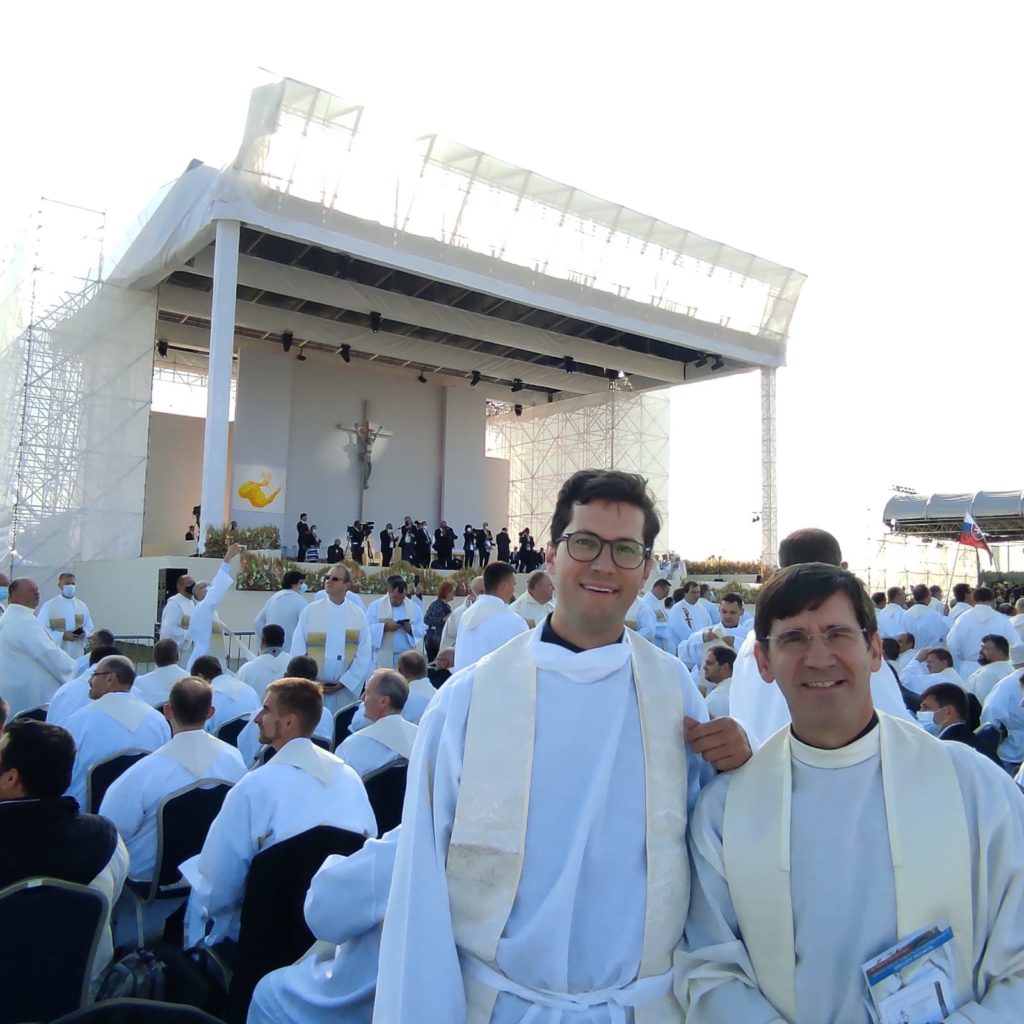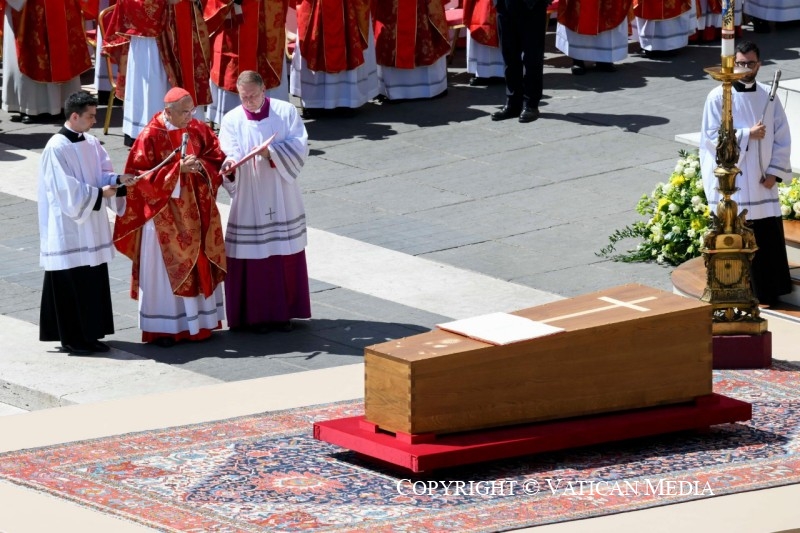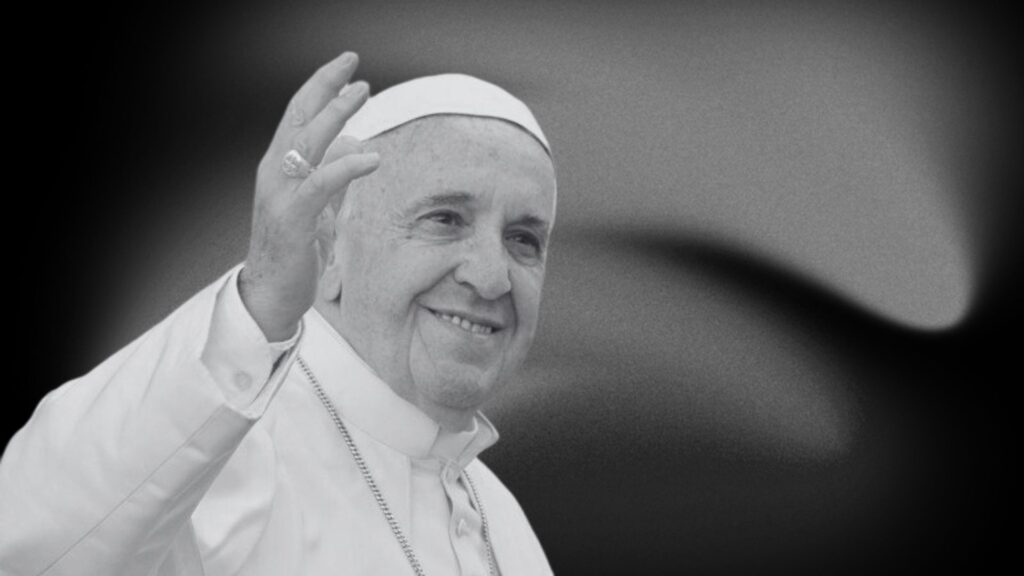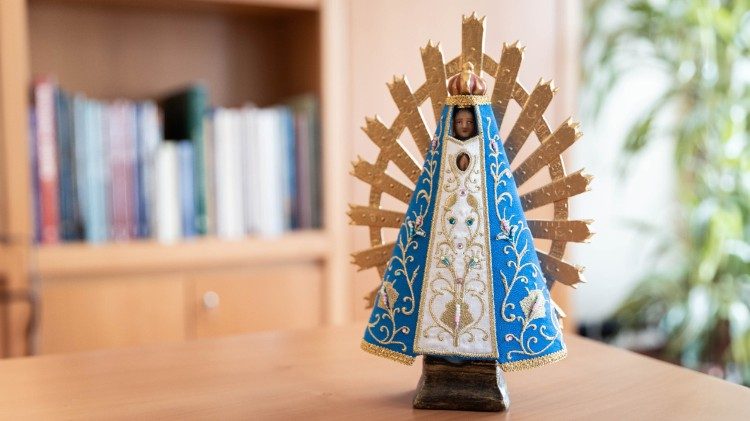Pope Asks Slovaks to ‘Set Out for the Mission’
Spanish Priest Oscar Beorlegui and Slovak Mrs. Maruska Mikolasikova Talk about the Pope’s Recent Visit to Slovakia

“To set out for the mission — a faith that sets out –, to be prophets, without going against things, and to have compassion. He applied these three things to the Virgin.”
Father Óscar Beorlegui thinks those words from Pope Francis’ homily in the National Shrine of Šaštin is the best summary of his visit to Slovakia, and of what he asks of Slovaks.
The Holy Father has just returned from his 34th International Apostolic Journey to Budapest, Hungary, to close the 52nd International Eucharistic Congress, on September 12, and from Slovakia, where he stayed until the 15th and visited Bratislava, Košice, Prešov, and Šaštin.
Feast of the Virgin of Seven Sorrows

In Slovakia, which was visited three times by Saint John Paul II — in 1990, 1995 and 2003 –, Pope Francis held meetings with, among others, the Jewish and gypsy communities, young people, priests, Religious, seminarians, and catechists, as well as presiding over a Byzantine Divine Liturgy. He also went to the Šaštin Shrine of the Virgin of Sorrows, Patroness of Slovakia, where he celebrated Holy Mass in the Basilica’s esplanade, precisely on the day of her feast, September 15.
This was the central moment in this country, as the Pope wanted his trip to Slovakia to be a pilgrimage of prayer to the Virgin of Seven Sorrows, so important for the Slovak people.
Exaudi talked with two people that attended some of the papal events: Spanish priest Father Oscar Beorlegui, of the Opus Dei Prelature, who was present during His Holiness’ meeting on the 13th with Bishops, priests, seminarians, religious, and catechists, and at the Mass in the National Shrine of Šaštin; and Maruska Mikolasikova Borovska, communicator and young mother of a family, who also attended the Mass in the Shrine.
Preparation of the Holy Father’s Trip

Father Beorlegui was Ordained in 2008 and went to Bratislava10 years ago, where he is Chaplain of a University Residence. Moreover, he is a collaborator in the Cathedral of the Slovak capital and also ministers at a palliative care center and at a school that opened three years ago.
In regard to the preparation of this papal trip, Father Beorlegui says that, on one hand, “it was done in a traditional way, as the Pope’s trips are prepared: with prayer. Rosary prayer chains were organized; parishes mobilized to pray.”
On the other hand, “we cannot forget that we are in the time of a pandemic. There was an added difficulty: the subject of the vaccine. The Government, which organized the trip, decided that only vaccinated people could attend the events,” he continues.
This caused “great consternation.” Finally, it was decided that the vaccinated and non-vaccinated could attend but with tests given to post COVID-19 people. Thank God this made it possible for more people to register,” reaching some 90,000, he adds.
Nevertheless, given the problem of the pandemic, the “many restrictions meant that older people” were unable to attend. Another problem was that one had to register to attend the different papal events, “and this made things difficult,” he explains.
In any case, “as the days approached of the Pope’s trip, thank God the number of participants in the different events grew exponentially,” he says.
Slovaks’ Faith
In regard to Slovaks’ faith, Father Beorlegui says that, on arrival in the country, “one realizes that one goes back in time quite a few years — not in the economic or cultural sense. In this, it’s very similar to the rest of Europe.” Instead, when it comes to the practice of the faith, it does seem that one goes back 40 years in time. As if one were in Spain in the 60s: long lines for Confession, the custom of the first Fridays of the month, Eucharistic Adorations . . . “
The Liturgy and the Sacraments “are lived in the traditional way. For example, before the pandemic in Slovakia, it was obligatory to receive communion in the mouth” and, “in principle, it will be so after.”
The Pope Set His Sights on a Small Country

For all that, “Pope Francis’ visit is a very important event for the country. The people are very impressed that the Holy Father set his sights on such a small country. They are very thrilled with the visit.
Nevertheless, Father Beorlegui points out that “there is a certain shock with the pandemic. They have been months in which the people secluded themselves in their homes, I’m thinking especially of the elderly. Because churches were closed for months, Masses were followed on television. The other day a priest of Bratislava told me that there is a certain fear that the people have grown accustomed to attending Mass on television; that it’s harder for people to go to church now. That’s why there was a certain fear that many people would not come out to greet the Holy Father.”
Finally, Father Beorlegui believes that it’s “too early to say what this visit of the Holy Father implies for Slovakia. The other day I read what an Italian Vatican expert on the Pontiff’s trips said when people commented to him that they noted that Slovaks were somewhat cold in face of the papal visit. But he also said that we shouldn’t worry because this Pope is very striking in the way he raises spirits in his trips.”
Freedom, Creativity, and Dialogue
In regard to the meeting with the Slovak clergy and catechists, which the Spanish priest attended, he says that the Successor of Peter showed himself “very close.” The “Pope insisted on seeing and greeting the people and he is worthy of admiration because he had a serious operation,” last July, he recalls.
“We laughed several times. He had very inspired comments that made us laugh. He pauses to comment on things, leaving the script. For example, in regard to homilies, he stressed a lot that they couldn’t last more than 10 to 15 minutes. No doubt he heard that, in Slovakia, many priests like to give homilies that seem like classes . . . , “ he adds.
He also highlights that, in his address, the Holy Father “used three words: freedom, creativity, and dialogue. I think that these three words summarize quite well what the Slovak Church might need when it comes to working in the coming years. It’s possible that it was remarked to the Pope that many members of the Slovak Church might need a certain renewal to flee from rigidity.”
The Pope Is Interested in the “Lost” Sheep
On being asked about all that he saw and heard, as well as the message of the Bishop of Rome, Father Beorlegui says that it’s “clear that the Pope is interested in the ‘lost’ sheep. And this was perceived in the trip’s plan, for example, “when meeting with the Slovak gypsy community, who are many in eastern Slovakia,” or in Bratislava, where he “visited the hostel and soup kitchen that Mother Teresa’s nuns have.”
It’s also clear that he stops to face people “that don’t count for society, or are far from God.” In this connection, it’s known “that he received the family of the Archbishop Emeritus of Trnava, removed nine years ago because there was no unity among the Bishops.” “Today he concelebrated in the final Mass (in the National Shrine). Let’s see if it helps him to return to unity with the rest of the Bishops.”
Set Out for the Mission
Finally, in regard to the spiritual fruits — the most important aspect of papal trips –, Father Beorlegui hopes that it will result in “a greater missionary impulse.” And, he referred to the Pope’s homily in the National Shrine of Šaštin, which he regards as the best summary of the visit and of what the Pope asks of Slovaks: to set out for the mission, to be prophets, without being against things, and to have compassion. He applied the three things to the Virgin.
“We’ll see in the coming months how the people are “orienting” the message,” he concludes.
“It Was Very Exciting”

For her part, Maruska Mikolasikova Borovska says that on September 15, the feast of the Patroness of Slovakia, she got up very early to be able to be at the Shrine and take part in the Eucharist. “It was very exciting; I had the good fortune to be able to see the Pope in his popemobile. Her father had gone a 5 o’clock in the morning to reserve a place in the esplanade so that all of them together could accompany His Holiness.
From Pope Francis’ homily, this young mother highlights the following words: “the faith can’t be reduced to sugar that sweetens life,” that “Jesus is a sign of contradiction” and that He “came to bring light where there is darkness, making it come out into the open and obliging it to give in.”
Mrs. Borovska highlights that she was able to live this experience, thanks to her husband’s staying at home to look after their three small children.
Translation by Virginia M. Forrester
Related

Mercy and the joy of the Gospel are two key concepts of Pope Francis
Exaudi Staff
26 April, 2025
9 min

Thousands of faithful bid farewell to Pope Francis in St. Peter’s Square
Exaudi Staff
26 April, 2025
2 min

Saying Goodbye to Francis
Exaudi Staff
26 April, 2025
2 min

Pope Francis Gifts a Statue of Our Lady of Luján to Gemelli and the Catholic University of the Sacred Heart
Exaudi Staff
25 April, 2025
2 min
 (EN)
(EN)
 (ES)
(ES)
 (IT)
(IT)

